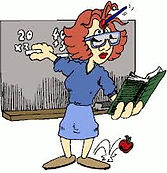FIRST GRADE > 1.NBT.4 > TEACHER GUIDE
1.NBT.4
Use place value understanding and properties of operations to add and subtract.
1.NBT.4 Add within 100, including adding a two-digit number and a one-digit number, and adding a two-digit number and a multiple of 10, using concrete models or drawings and strategies based on place value, properties of operations, and/or the relationship between addition and subtraction; relate the strategy to a written method and explain the reasoning used. Understand that in adding two-digit numbers, one adds tens and tens, ones and ones; and sometimes it is necessary to compose a ten.
Adding a Two-digit number and a Multiple of Ten
Using Concrete Models and Strategies Based on Place Value
Students are encouraged to use models such as base-ten blocks to initially solve addition problems like
“38 + 50= ☐ ” but they come to understand that this type of problem involves adding multiples of ten. For example, they demonstrate their understanding of adding tens and multiples of ten as only changing the tens digit using decomposition.
Examples:
43+36
Student counts the 10s (10, 20, 30...70 or 1, 2, 3...7 tens) and then the 1s.


28
+ 34
-----
Student thinks: 2 tens plus 3 tens is 5 tens or 50. S/he counts the ones and notices there is another 10 plus 2 more.
50 and 10 is 60 plus 2 more or 62.
45 + 18
Student thinks: Four 10s and one 10 are 5 tens or 50. Then 5 and 8 is 5 + 5 + 3 (or 8 + 2 + 3) or 13. 50 and 13 is 6 tens plus 3 more or 63.
40 + 18
50 + 8
58
This standard builds on students’ prior experiences and background knowledge regarding addition and place value. For example, as students previously learned the strategy of "making ten" for adding single-digit numbers, learning opportunities should be provided to extend students' understanding to develop fluency with the "make the nearest ten" strategy for addition of larger numbers. Students should gradually become less reliant on "counting on" strategies and develop fluency with more efficient strategies.
Students extend their number fact and place value strategies to add within 100. They represent a problem situation using any combination of words, numbers, pictures, physical objects, or symbols. It is important for students to understand if they are adding a number that has 10s to a number with 10s, they will have more tens than they started with; the same applies to the ones. Also, students should be able to apply their place value skills to decompose numbers. For example, 17 + 12 can be thought of 1 ten and 7 ones plus 1 ten and 2 ones. Numeral cards may help students decompose the numbers into 10s and 1s.
Students should be exposed to problems both in and out of context and presented in horizontal and vertical forms.
Kansas Association of Teachers of Mathematics (KATM) Flipbooks.
Questions or to send feedback: melisa@ksu.edu. Retrieved from Grade 1 Flip Book.
For additional information go to Achieve the Core
Coherence and Connections: Need to Know
Grade Below
2.OA.1
2.NBT.5
Grade Level
1.NBT.4
1.OA.6
1.NBT.2
Grade Above

First grade is the first time where students are using "10" as a unit .


PARCC Draft Model Content Frameworks: Mathematics Grades K-2.
Learning Trajectories describe how concepts, and student understanding, develop over time.
This site describes the order in which students should be exposed to concepts in order to reason proficiently.
http://www.turnonccmath.net/ajax.php?key=add-sub&fmt=html#sec2
Also check out Student Achievement Partners Coherence Map
Classroom Resources
1.NBT.4 Daily Discourse
Problem of the Day - Every day start with a new number and add 20. Eventually add other multiples of ten.
Solve each problem. Show your thinking with pictures, numbers, or words
31 + 40 = = 50 + 27
= 32 + 50 74 + = 94
63 + = 83 = 32 + 40
HOT Questions
Shade the solution for 20 + 14 =

Shade the solution for 30 + 11 =

Ally bought 12 butterfly stickers.
Cody has 20 more stickers than Ally.
How many stickers does Cody have? _________________
Model you answer on the grid.

Cody has ? stickers
?
Ally
How many more does Cody have
12 stickers
? more
Britgette said 73 + 20 is 75. What is Bridgette thinking and why is she incorrect?

In addition, during instruction, teachers are strongly encouraged to turn students’ misconceptions into learning opportunities. Whenever students express an incorrect answer or a misconception, the teacher’s response should be something like, “How did you get that?” Formative assessment is most effective when it occurs in real time. Thus, the best way to help a student overcome a misconception is to have him or her talk about it so the teacher can identify what specifically needs to be addressed. Talking openly about misconceptions (in a safe, non-judgmental manner) helps foster a classroom learning culture in which students expect mathematics to make sense, in which they learn that effort and perseverance are necessary for learning mathematics, and in which making mistakes is a natural and important part of the learning process


Caitlin made a picture with base ten blocks. Write an addition equation to answer how many blocks she used
Additional Resources
Illustrative Mathematics
https://tasks.illustrativemathematics.org/content-standards/1/NBT/C/4/tasks/2068
Howard County
Hawaii Tasks
http://standardstoolkit.k12.hi.us/farmer-brown-1-nbt-4/
http://standardstoolkit.k12.hi.us/going-to-the-store-1-nbt-11-nbt-41-nbt-6/
http://standardstoolkit.k12.hi.us/grid-picture-1-nbt-11-nbt-21-nbt-4/
http://standardstoolkit.k12.hi.us/how-many-fingers-1-oa-11-nbt-11-nbt-4/
http://standardstoolkit.k12.hi.us/how-many-flowers-1-oa-11-nbt-11-nbt-4/
http://standardstoolkit.k12.hi.us/scoops-1-nbt-11-nbt-4/
http://standardstoolkit.k12.hi.us/spin-to-win-1-nbt-11-nbt-4/
http://standardstoolkit.k12.hi.us/how-many-pencils-1-oa-11-nbt-11-nbt-6/
EngageNY
https://www.engageny.org/ccls-math/1nbt4
Inside Mathematics Problem of the Month
https://www.insidemathematics.org/sites/default/files/materials/measuring%20up_30.pdf (Level A)
ISBE Model Resources
Matching Representations for Addition


